PAIR Caetei – Caete River Dwarf Cichlid – Dwarf South American Cichlid (2 FISH MAIL & FEMAILE), Stunning Aquatic Companions for Peaceful Community Tanks
£52.49 Original price was: £52.49.£44.51Current price is: £44.51.
Welcome these beautiful PAIR Caetei – Caete River Dwarf Cichlids into your aquarium. Their stunning colors and peaceful nature make them ideal community fish. This listing includes one male and one female, perfect for aquarists seeking vibrant and elegant freshwater fish companions.
1001 in stock
Species Introduction
The Caetei Cichlid, scientifically known as Apistogramma caetei, is a captivating species originating from the lush waters of the Caete River in Brazil. This dwarf cichlid is renowned for its vibrant colors and peaceful demeanor, making it an excellent choice for community tanks. In their natural habitat, these fish thrive in slow-moving waters filled with dense vegetation, where they can find ample hiding spots and breeding sites. The Caetei Cichlid’s natural environment is characterized by soft, acidic waters, rich in organic material, which contributes to their stunning coloration and overall health. These aquatic companions are not just beautiful to observe; they also exhibit fascinating behaviors that make them a joy to keep. Their small size, typically reaching about 2 to 3 inches in length, allows them to fit comfortably in various tank setups, making them ideal for both novice and experienced aquarists alike.
Care Requirements Dashboard
Essential Care Guide for Your PAIR Caetei – Caete River Dwarf Cichlid
| Optimal Living Conditions | |
|---|---|
| Water Temperature | 24-27°C (75-81°F) |
| pH Level | 6.5-7.5 |
| Water Hardness | 4-12 dKH |
| Minimum Tank Size | 80L (20 gal) |
| Salinity | Freshwater |
| Care Level | Beginner Friendly |
✓ Care Level: Easy
To ensure a thriving environment for your Caetei Cichlids, it is essential to provide suitable care requirements. A minimum tank size of 20 gallons is recommended to allow ample swimming space and territory establishment. The water parameters should be maintained at a temperature range of 75-82°F (24-28°C), with a pH level between 6.0 and 7.5. Soft to moderately hard water is ideal, with a hardness range of 5-15 dGH. Regular water changes of about 20-30% weekly will help maintain optimal water quality, which is crucial for the health of these fish. Additionally, a well-planted tank with hiding spots created by rocks and driftwood will mimic their natural habitat and reduce stress. Providing a balanced diet consisting of high-quality flake food, frozen or live foods, and occasional vegetable matter will promote vibrant colors and overall well-being.
Natural Behavior & Temperament
The Caetei Cichlid is known for its peaceful nature, making it an excellent addition to community tanks. These fish exhibit interesting social behaviors, often establishing territories and engaging in playful interactions with one another. Males can be slightly more aggressive during breeding periods, but they generally coexist harmoniously with other peaceful species. They are bottom dwellers, preferring to explore the substrate for food and hiding spots. Observing their swimming patterns can be quite entertaining, as they often dart in and out of plants and decorations, showcasing their vibrant colors. Their inquisitive nature makes them interactive fish that enjoy engaging with their environment and the aquarist. It’s important to provide them with plenty of hiding spots and open swimming areas to reduce stress and allow for natural behaviors.
Tank Setup Guide
Creating an ideal environment for your Caetei Cichlids involves replicating their natural habitat as closely as possible. Start with a tank size of at least 20 gallons, ensuring that there is enough space for your fish to swim freely and establish territories. A sandy substrate is preferable, as it allows for natural digging behaviors and provides a comfortable environment for these bottom dwellers. Incorporate a variety of plants, such as Java fern, Anubias, and Amazon sword, to create hiding spots and promote a sense of security. Use driftwood and rocks to create caves and territories, which are essential for their natural behavior. Maintaining a gentle water flow will help replicate their natural habitat, as they prefer calm waters. Additionally, consider adding floating plants to diffuse light and provide shade, which can help reduce stress levels.
Water Quality Management
Important Water Parameter Notice
Maintaining optimal water quality is crucial for the health and well-being of your Caetei Cichlids. The ideal pH range for these fish is between 6.0 and 7.5, with a temperature maintained between 75-82°F (24-28°C). Regular testing of water parameters using reliable test kits is essential to ensure that ammonia and nitrite levels remain at 0 ppm, while nitrate levels should be kept below 20 ppm. Conducting regular water changes of 20-30% weekly will help maintain water quality and remove any accumulated toxins. Additionally, using a quality filtration system will aid in maintaining clean water and providing aeration. Keep in mind that these fish are sensitive to drastic changes in water conditions, so any adjustments should be made gradually to avoid stress.
Feeding & Nutrition
Feeding your Caetei Cichlids a balanced diet is essential for their health and vibrant coloration. These fish are omnivorous and thrive on a varied diet that includes high-quality flake foods, pellets, and live or frozen foods such as brine shrimp, daphnia, and bloodworms. It is recommended to feed them small amounts 2-3 times a day, ensuring that all food is consumed within a few minutes to prevent water quality issues. Additionally, providing vegetable matter such as blanched spinach or zucchini can help supplement their diet and promote digestive health. Monitoring their feeding habits is important, as overfeeding can lead to obesity and health issues. A well-fed Caetei Cichlid will display vibrant colors and exhibit active behavior, making them a joy to observe in your aquarium.
Compatibility Guide
When considering tank mates for your Caetei Cichlids, it is essential to choose peaceful species that can coexist harmoniously. Ideal companions include other dwarf cichlids, tetras, rasboras, and smaller catfish species. Avoid aggressive or territorial fish, as they may stress your Caetei Cichlids and disrupt their natural behaviors. Some suitable tank mates include neon tetras, guppies, and Corydoras catfish. It’s important to introduce new fish gradually and monitor their interactions to ensure a peaceful community. Providing plenty of hiding spots and territories will help reduce aggression and allow all fish to thrive in a shared environment. Remember, the key to a successful community tank is to maintain a balanced mix of species that complement each other’s needs.
Health & Wellness
Maintaining the health and wellness of your Caetei Cichlids involves regular monitoring and proactive care. Common health issues include ich, fin rot, and stress-related conditions. Signs of illness may include lethargy, loss of appetite, or abnormal swimming patterns. To prevent these issues, ensure that water quality is consistently maintained and that the tank is not overcrowded. Quarantining new fish before introducing them to the main tank can help prevent the spread of diseases. If you notice any signs of illness, it’s important to act quickly by isolating the affected fish and treating them appropriately. Regularly observing your fish will help you catch any potential health issues early, allowing for timely intervention and care.
Breeding Information
Breeding Caetei Cichlids can be a rewarding experience for aquarists. These fish are known to be relatively easy to breed in a home aquarium setting. To encourage breeding, provide a separate breeding tank with optimal conditions, including soft, acidic water and plenty of hiding spots. The female will lay eggs on flat surfaces, such as rocks or leaves, and both parents will take turns guarding the eggs. After about 3-4 days, the eggs will hatch into fry, which will require infusoria or finely crushed flakes for initial feeding. As they grow, you can gradually introduce larger foods. It’s essential to maintain good water quality during this time to ensure the fry’s health. Breeding can also be a great opportunity to observe the parental care exhibited by the Caetei Cichlids, as they are known to be attentive parents.
Acclimation Process
When introducing your new Caetei Cichlids to their new home, it is crucial to acclimate them properly to minimize stress and ensure a smooth transition. Begin by floating the sealed bag containing the fish in the aquarium for about 15-20 minutes to equalize the temperature. After that, gradually mix small amounts of tank water into the bag over the next hour. This process helps the fish adjust to the new water parameters. Once acclimated, gently release the fish into the tank using a net to avoid introducing excess bag water. Monitor their behavior closely for the first few days to ensure they are settling in well. Providing a calm environment during this transition will help your Caetei Cichlids feel secure in their new surroundings.
Long-term Care
Long-term care for your Caetei Cichlids involves regular maintenance and observation to ensure they thrive throughout their lifespan. These fish can live for 5-8 years with proper care, so establishing a routine is essential. Regular water changes, consistent feeding schedules, and monitoring of water parameters are crucial aspects of their care. Additionally, maintaining a clean tank environment by removing uneaten food and debris will help prevent health issues. Observing their behavior and interactions with other tank mates will also provide insights into their well-being. Keeping a journal of their growth and health can be beneficial for tracking any changes or potential issues over time.
Natural Habitat Recreation
To recreate the natural habitat of the Caetei Cichlid, focus on mimicking the conditions found in the Caete River. This involves using a sandy substrate, incorporating various plants, and providing plenty of hiding spots with rocks and driftwood. The tank should be well-planted, allowing the fish to feel secure and reducing stress. Additionally, maintaining soft, acidic water with a temperature range of 75-82°F (24-28°C) will closely resemble their natural environment. Regularly trimming plants and maintaining the tank’s aesthetics will not only enhance the visual appeal but also ensure that your Caetei Cichlids feel at home. Creating a biotope that reflects their natural habitat will promote their health and well-being, allowing you to enjoy their natural behaviors.
Seasonal Care Adjustments
As seasons change, so do the care requirements for your Caetei Cichlids. During warmer months, ensure that the water temperature remains stable, as fluctuations can stress the fish. Consider using a heater during colder months to maintain the ideal temperature range. Additionally, monitor the water quality more frequently during summer, as higher temperatures can lead to increased evaporation and concentration of toxins. Adjusting the lighting schedule to mimic natural day and night cycles is also beneficial. Providing shaded areas with floating plants during peak sunlight hours can help reduce stress. By being attentive to seasonal changes, you can ensure a comfortable and stable environment for your Caetei Cichlids.
Expert Tips
For those looking to provide the best care for their Caetei Cichlids, consider implementing these expert tips. First, invest in a quality water testing kit to regularly monitor water parameters. This proactive approach will help you catch any potential issues before they become serious problems. Additionally, consider creating a breeding setup if you are interested in breeding these fish; a separate tank with optimal conditions will increase your chances of success. Regularly varying their diet with different food types will not only keep them healthy but also enhance their coloration. Lastly, engage with your fish by observing their behavior and interactions; this will deepen your appreciation for these beautiful aquatic companions.
Troubleshooting
If you encounter issues with your Caetei Cichlids, it’s essential to troubleshoot effectively. Common problems include stress due to aggressive tank mates or poor water quality. If you notice signs of stress, such as hiding or changes in appetite, assess the tank environment and make necessary adjustments. If health issues arise, such as fin rot or ich, prompt treatment is crucial. Isolate affected fish and treat them in a separate tank if necessary. Regular maintenance, including water changes and tank cleaning, will help prevent many common issues. By being observant and proactive, you can ensure a healthy and thriving environment for your Caetei Cichlids.
Scientific Background
The Caetei Cichlid belongs to the family Cichlidae, which is known for its diverse range of species found in freshwater environments. Cichlids are particularly noted for their complex behaviors and social structures, making them a fascinating group of fish to study. The taxonomy of the Caetei Cichlid places it within the genus Apistogramma, which includes many other dwarf cichlid species. Research into the conservation status of these fish highlights the importance of preserving their natural habitats, as many freshwater ecosystems are threatened by pollution and habitat destruction. Understanding the scientific background of the Caetei Cichlid can enhance your appreciation for these beautiful fish and the ecosystems they inhabit.
Advanced Care Techniques
For aquarists looking to take their care for Caetei Cichlids to the next level, consider implementing advanced techniques. Utilizing a planted tank with a variety of aquatic plants can enhance the aesthetic appeal and provide natural filtration. Additionally, consider using a sponge filter to maintain water quality while providing gentle aeration. Regularly rotating tank decorations can stimulate the fish’s environment and encourage natural behaviors. Engaging in selective breeding can also enhance desirable traits, such as coloration and temperament. By employing these advanced care techniques, you can create a thriving environment that promotes the health and happiness of your Caetei Cichlids.
Water Quality Parameters
Optimal Range
24-27°C
6.5-7.5
0 ppm
Caution Zone
22-24°C or 27-29°C
6.0-6.5 or 7.5-8.0
0.25-0.5 ppm
Danger Zone
<22°C or >29°C
<6.0 or >8.0
>0.5 ppm
Monitoring Tip: Test water parameters weekly and perform regular water changes to maintain optimal conditions for your aquatic friends!
Frequently Asked Questions
Q: What tank size is required for Caete River Dwarf Cichlids?
For Caete River Dwarf Cichlids, a minimum tank size of 60 litres (15 gallons) is recommended. This provides ample swimming space and room to establish territories, which is crucial for their well-being. A larger tank can support a more stable environment and reduce stress among fish. It’s important to create hiding spots and territories using plants and decorations, as these fish are naturally territorial. A well-planned layout will help minimise aggression, especially during breeding periods. Regular maintenance, including water changes and substrate cleaning, will contribute to a healthier environment, promoting the longevity and vibrancy of your aquatic companions.
✓ Expert Tip
Consider adding live plants to the tank. They not only provide hiding spots but also help maintain water quality.
Q: What water parameters do Caete River Dwarf Cichlids require?
Caete River Dwarf Cichlids thrive in soft, slightly acidic to neutral water conditions. Ideally, the pH should range between 6.0 and 7.5, with a hardness of 2-10 dGH. Maintaining stable water temperature between 24°C and 28°C (75°F to 82°F) is essential. Regular testing of water parameters using reliable kits will help ensure these conditions are met. Sudden changes in water chemistry can cause stress and illness in your fish. Additionally, performing regular water changes (about 20% weekly) will help maintain optimal conditions and enhance the overall health of your aquatic companions.
✓ Expert Tip
Use a high-quality water conditioner to remove harmful chemicals and improve water quality.
Q: How often should I feed Caete River Dwarf Cichlids?
Feeding Caete River Dwarf Cichlids should occur 2-3 times a day, offering only as much food as they can consume within a few minutes. A varied diet is crucial for their health, including high-quality flakes, pellets, and live or frozen foods like brine shrimp and daphnia. This diversity not only ensures they receive adequate nutrition but also mimics their natural feeding habits. Be cautious not to overfeed, as excess food can lead to water quality issues and health problems. Observing their behaviour during feeding can help you adjust portions accordingly, ensuring your fish remain lively and healthy.
✓ Expert Tip
Incorporate occasional fasting days to prevent digestive issues.
Q: What are the best tank mates for Caete River Dwarf Cichlids?
When selecting tank mates for Caete River Dwarf Cichlids, opt for peaceful species that share similar water requirements. Suitable companions include smaller tetras, rasboras, and peaceful bottom dwellers like Corydoras. Avoid aggressive or larger fish that may intimidate or outcompete them for food. Remember that these cichlids can exhibit territorial behaviour, especially during breeding, so ensure there are plenty of hiding spots and territories available. This helps reduce stress and aggression, fostering a harmonious community tank environment. Monitoring interactions regularly will allow you to intervene if necessary, ensuring all fish thrive together.
✓ Expert Tip
Introduce new fish gradually to minimise stress and aggression.
Q: How do I properly acclimatise Caete River Dwarf Cichlids to my aquarium?
Acclimatising your Caete River Dwarf Cichlids is crucial for their health. Begin by floating the sealed bag in your aquarium for about 15-20 minutes, allowing the temperature to equalise. After this, gradually introduce aquarium water into the bag by adding small amounts every 5-10 minutes. This process should last about an hour. Finally, gently transfer the fish into the tank using a net to avoid adding bag water, which may contain harmful substances. Avoid sudden changes in water parameters, as this can lead to stress and health issues. Proper acclimatisation ensures your new aquatic companions adjust smoothly to their new environment.
✓ Expert Tip
Always acclimatise fish in dim light to reduce stress during the process.
Q: What are the signs of healthy Caete River Dwarf Cichlids?
Healthy Caete River Dwarf Cichlids display vibrant colours, clear eyes, and active behaviour. They should swim freely without signs of distress, such as hiding excessively or remaining at the water’s surface. Healthy fish will also exhibit a good appetite and respond positively to feeding. Regular monitoring for any physical signs of illness, such as lesions, fin damage, or unusual swimming patterns, is essential. An active and social behaviour indicates a well-adjusted fish. Keeping a close eye on these indicators allows you to address any potential health issues promptly, ensuring your aquatic companions remain in peak condition.
✓ Expert Tip
Introduce a regular observation routine to catch any health issues early.
Q: How do I successfully breed Caete River Dwarf Cichlids?
To successfully breed Caete River Dwarf Cichlids, provide a breeding tank with fine substrate and flat surfaces for laying eggs. Maintaining slightly warmer water (around 28°C) and stable pH levels will encourage breeding behaviour. Introduce a male and female to the breeding tank, ensuring they are well-fed and healthy. Once spawning occurs, the female will lay eggs, which the male will fertilise. After a few days, the eggs will hatch, and the fry should remain in the breeding tank until they are large enough to join the community tank. Monitor the breeding pair closely, as parental care can vary. This process not only enhances your fish-keeping experience but also promotes the natural behaviour of your aquatic companions.
✓ Expert Tip
Provide infusoria or finely crushed flakes as initial food for the fry.
Q: What temperature should I maintain for Caete River Dwarf Cichlids?
Caete River Dwarf Cichlids prefer a stable water temperature between 24°C and 28°C (75°F to 82°F). This range mimics their natural habitat in the warm rivers of South America. Fluctuations in temperature can lead to stress and susceptibility to diseases. Therefore, using a reliable aquarium heater with a thermometer will help maintain consistent conditions. Regular checks on water temperature, particularly during seasonal changes, are essential. Should temperature adjustments be necessary, do so gradually to avoid shocking your fish. Proper temperature management is vital for their health, behaviour, and overall well-being.
✓ Expert Tip
Consider using a programmable heater for precise temperature control.
Q: How long do Caete River Dwarf Cichlids typically live in captivity?
In captivity, Caete River Dwarf Cichlids can live for 5 to 7 years, provided they are kept in optimal conditions. Factors influencing their lifespan include water quality, diet, and overall tank environment. Ensuring stable water parameters, regular maintenance, and a nutritious diet will significantly contribute to their longevity. Observing their behaviour and health regularly will also help identify any issues early on. By creating a suitable habitat that mimics their natural environment, you can support their well-being and enjoy their delightful presence for many years.
✓ Expert Tip
Keep a consistent feeding schedule to promote health and vitality.
Q: What type of substrate is most suitable for Caete River Dwarf Cichlids?
A fine, sandy substrate is most suitable for Caete River Dwarf Cichlids as it mimics their natural river habitat. This substrate allows them to forage naturally without injury to their delicate fins. Additionally, it provides a comfortable environment for breeding, as they will lay their eggs in the substrate. Avoid sharp or coarse substrates that can harm their bodies. Furthermore, incorporating various decorations and plants will enhance the aesthetic and functionality of their environment, giving them places to hide and explore. Regular maintenance of the substrate is important to prevent the build-up of waste and maintain water quality.
✓ Expert Tip
Consider using a vacuum during water changes to keep the substrate clean.
Q: What behavioural patterns should I expect from Caete River Dwarf Cichlids?
Caete River Dwarf Cichlids are known for their inquisitive and social behaviour. They often explore their environment and interact with tank mates, displaying a range of activities, including digging and hiding. These cichlids can be territorial, particularly during breeding, so providing ample hiding spots is essential to reduce conflict. When kept in appropriate group sizes, they exhibit more natural behaviours and are less likely to become stressed. Observing their interactions can provide insights into their well-being. Regularly monitoring their behaviour will help you identify any signs of stress or illness, allowing for timely intervention.
✓ Expert Tip
Encourage natural behaviours by rearranging tank decorations occasionally.
Q: How can I prevent common diseases in Caete River Dwarf Cichlids?
Preventing diseases in Caete River Dwarf Cichlids involves maintaining optimal water quality and a stable environment. Regular water changes and testing for ammonia, nitrite, and nitrate levels are crucial. Quarantining new fish before introducing them to the main tank can help prevent the spread of pathogens. Additionally, providing a balanced diet with essential nutrients will bolster their immune systems. Keep an eye out for signs of stress or illness, such as changes in behaviour or appetite. Early detection and treatment of any issues will help ensure the health and longevity of your aquatic companions.
✓ Expert Tip
Consider adding aquarium salt to help with stress and minor ailments.
Q: What lighting conditions do Caete River Dwarf Cichlids prefer?
Caete River Dwarf Cichlids prefer subdued lighting, as they naturally inhabit shaded areas in their river habitat. Using a combination of floating plants and strategically placed decorations can help create a comfortable environment. A lighting schedule of about 10-12 hours a day mimics natural day-night cycles, promoting healthy behaviours and reducing stress. Avoid bright, harsh lighting, as this can cause discomfort and encourage hiding. Observing your fish’s behaviour can help you determine if the lighting conditions are suitable. Adjusting the intensity and duration of light can enhance their overall well-being and colouration.
✓ Expert Tip
Use dimmable LED lights to easily adjust brightness according to your fish’s needs.
Q: How do I recognise stress in Caete River Dwarf Cichlids?
Recognising stress in Caete River Dwarf Cichlids involves observing changes in behaviour and physical appearance. Signs of stress may include excessive hiding, rapid gill movement, loss of appetite, or aggressive behaviour towards tank mates. Additionally, changes in colouration or fin clamping can indicate distress. Maintaining optimal water quality and stable conditions is essential to prevent stress. If you notice any of these signs, it is crucial to assess the tank environment and make necessary adjustments. Addressing stressors promptly will help your aquatic companions recover and thrive.
✓ Expert Tip
Provide plenty of hiding spots to help reduce stress levels.
Q: What natural habitat conditions should I replicate for Caete River Dwarf Cichlids?
To replicate the natural habitat of Caete River Dwarf Cichlids, focus on creating a soft, sandy substrate with plenty of hiding spots. Incorporate driftwood, rocks, and live plants to mimic their riverine environment. Maintaining slightly acidic to neutral water conditions, along with stable temperatures, is vital. Additionally, moderate water flow can simulate their natural habitat, promoting healthy behaviours. It is essential to ensure that the tank is well-maintained, with regular water changes and quality monitoring, to provide a thriving environment. By closely mimicking their natural conditions, you will enhance their health and overall well-being.
✓ Expert Tip
Research the natural habitat of your fish to create the best possible environment.




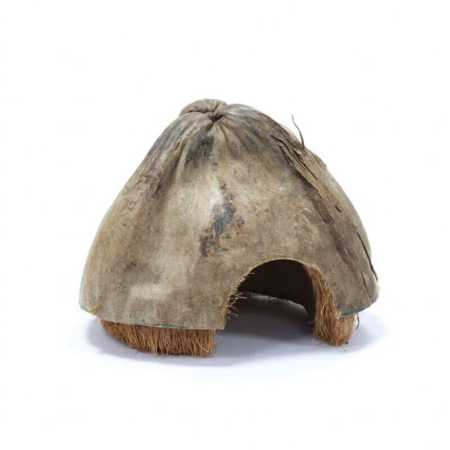
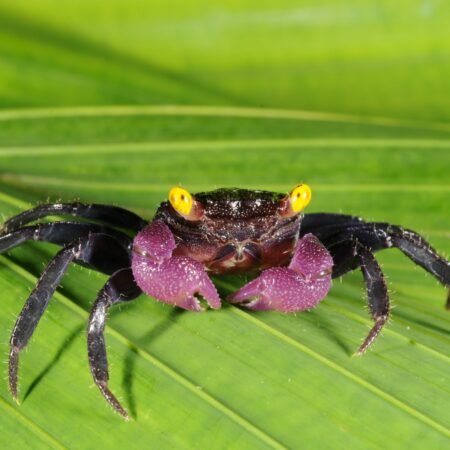
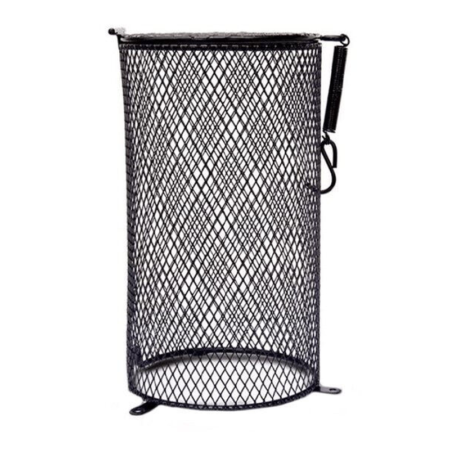
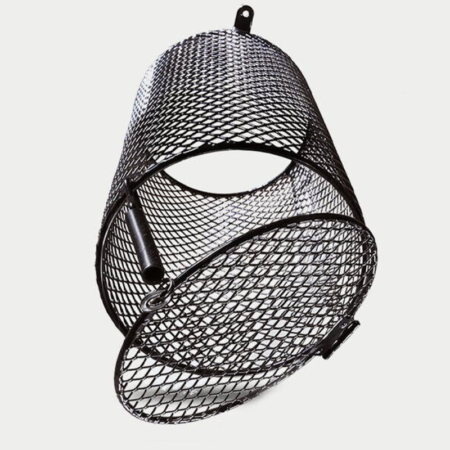


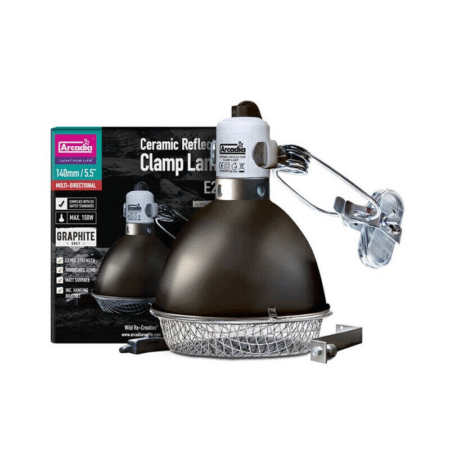





Emily Carter (verified owner) –
I recently purchased a pair of Caetei (male and female) for my 30-gallon aquarium, and I couldn’t be happier! As a passionate fish parent, I prioritize the well-being of my aquatic friends, and these dwarf cichlids have exceeded my expectations. They arrived in perfect condition, healthy and vibrant, which is always a relief when ordering online. After about two weeks in their new home, I’ve observed them displaying beautiful, natural behaviors and even engaging in a little courtship!
Their colors are absolutely stunning, with shades of blue and yellow that really pop against the lush green plants in my tank. Compared to other cichlids I’ve kept, they are much more peaceful and less aggressive, making them perfect for a community aquarium. I did notice they prefer slightly warmer water, around 78-80°F, so I adjusted my heater accordingly.
I highly recommend Caete River Dwarf Cichlids to anyone looking to add some personality and charm to their freshwater fish collection. Just make sure to provide them with plenty of hiding spots and a well-planted environment to keep them happy. This pair has truly brought my aquarium to life!
Emily Carter (verified owner) –
I recently purchased a pair of Caetei cichlids, and I couldn’t be happier! After a week in my 30-gallon community tank, these stunning tropical fish have brought so much life and color to the aquarium. Their vibrant hues of blues and yellows are simply mesmerizing. I was initially worried about how they would interact with my other peaceful community fish, but they’ve settled in beautifully and are quite social without being aggressive.
In comparison to the other dwarf cichlids I’ve kept, the Caetei have a unique charm that truly stands out. They seem to thrive in well-planted environments, which I made sure to incorporate, and they love exploring their space. I recommend providing plenty of hiding spots, as it makes them feel secure.
Shipping was prompt, and both fish arrived healthy and active. My only minor concern was getting the pair acclimated, but with careful observation and a gentle introduction, they quickly adjusted. If you’re looking for colorful fish that enhance your aquarium’s aesthetics and contribute to a peaceful community, I highly recommend the Caetei pair! They’re perfect for any aquarist looking to add a splash of personality to their tank.